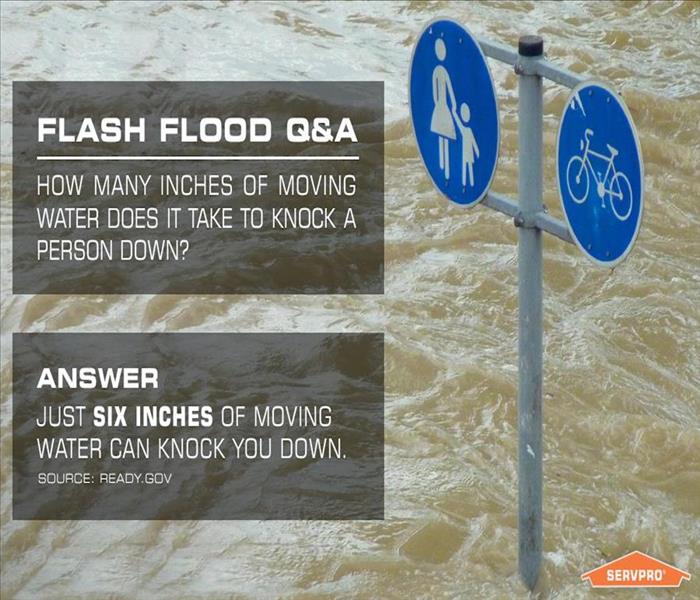Emergency Commercial Flooding & Water Removal Services for Kennesaw GA
9/14/2018 (Permalink)
Flooding is the most common natural disaster in the United States and can happen anywhere. Preparing for a flood is crucial in order to protect yourself, your property, and your business from flood damage. There are some guidelines the Federal Emergency Management Agency (FEMA) encourage business owners to take under consideration, so that business owners can act quickly when the time comes when your home, or your business is in danger.
Call SERVPRO of East Cobb -Emergency Flood & Water Removal (770) 424-0400
Flooding is an overflowing of water onto land that is normally dry. Flooding may happen with only a few inches of water, or it may cover a business or home's rooftop. Flooding can occur during any season, but some areas of the country are at greater risk at certain times of the year.
Coastal areas are at greater risk for flooding during hurricane season (i.e., June to November), while the Midwest is more at risk in the spring and during heavy summer rains. Ice jams occur in the spring in the Northeast and Northwest. Even the deserts of the Southwest are at risk during the late summer monsoon season.
Flooding can happen in any U.S. state or territory. It is particularly important to be prepared for flooding if you live in a low-lying area near a body of water, such as a river, stream, or culvert; along a coast; or downstream from a dam or levee.
Flooding can occur in several ways, including the following:
- Rivers and lakes cannot contain excessive rain or snow melt.
- Excessive rain or snow melt cannot be fully absorbed into the ground.
- Waterways are blocked with debris or ice and overflow.
- Water containment systems break, such as levees, dams, or water or sewer systems.
- Strong winds from tropical storms or hurricanes cause a storm surge by pushing seawater onto land.
The speed and duration of flooding can vary significantly.
- Flooding can occur slowly as rain continues to fall for many days. This type of flooding, sometimes called a slow-onset flood, can take a week to develop and can last for months before floodwaters recede.
- Rapid-onset floods occur more quickly, typically developing within hours or days. These types of floods usually occur in smaller watersheds experiencing heavy rainfall, particularly in mountainous and urban areas, and the water usually recedes within a few days.
- Some rapid-onset floods known as flash floods occur very quickly with little or no warning, such as during periods of extremely heavy rain or when levees, dams, ice jams, or water systems break. Densely populated areas are at a high risk for flash floods. In urban areas, flash floods can fill underpasses, viaducts, parking structures, low roads, and basements.
- The strong winds of a tropical cyclone or hurricane can push large amounts of seawater up onto the land, causing a storm surge. A storm surge combines with the ocean’s tide to produce a storm-tide surge. Storm-tide surges have been registered as high as almost 35 feet above normal sea level and can cause significant flooding across a large area. This generally occurs over a short period, typically 4 to 8 hours, but in some areas, it can take much longer for the water to recede to its pre-storm level.
The physical destruction caused by flooding depends on the speed and level of the water, the duration of the flood, terrain and soil conditions, and the built environment (e.g., buildings, roads, and bridges).
- Flooding can cause fatalities and serious injuries for people who are trapped or swept away by wading in, driving through, or boating across floodwaters.
- Transportation routes, power, water, gas, and other services may be disrupted.
- Commercial supplies and government support systems may be temporarily unavailable.
- Drinking water supplies and wells may become polluted.
- Floodwaters can cause erosion, which can damage roads, bridge structures, levees, and buildings with weak foundations, causing their collapse without warning. The floodwaters may carry the worn-away mud, rocks, and other sediment.
- Landslides and mudslides can occur.
- Even a few inches of floodwater in a home can cause tens of thousands of dollars in damage






 24/7 Emergency Service
24/7 Emergency Service